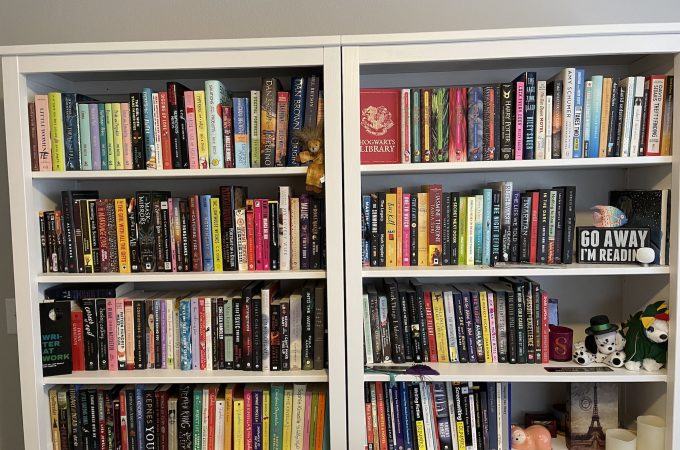
10 important elements of a story
According to Dictionary.com, a story is defined as “a narrative, either true or fictitious, in prose or verse, designed to interest, amuse, or instruct the hearer or reader; tale.”
Stories can be simple and stories can be complex sagas but most share quite a few key traits. Like in the definition above, stories are essentially an account of things that happened and the people involved. But writing a story that’s a full-length novel has a few more nuances than just writing things that happened.
In this blog post, I’m outlining several important elements of a story that you need to think of as you outline your novel idea or sit down to write your story.
What are the fundamental elements your story has to have?

1. Theme/purpose
You should know what theme you’re trying to convey in your writing or at least know why you have to tell this story. This doesn’t mean that you have to broadcast the theme and have your characters spell it out for your readers, but your readers should close the book feeling satisfied and having felt a connection with the story and/or characters.
The story has to mean something whether it’s about love, family, identity, fate vs. free will, power, redemption, forgiveness, hope, or any number of things that are universal human truths.
2. Characters
Obviously your story has to be shown through its characters and the actions they take. Even if you told a story about Mother Nature or the earth, we’d personify things like the dirt, water, air, and trees, and so on to identify with someone or something in the story.
Your characters are important but even more so are the changes they go through with their character arcs. As humans, we change. A lot. We are not static beings and our characters shouldn’t be either. They need to grow, change, and embrace who they are and recognize their flaws while trying to overcome them. They are human. They are not infallible.
3. Plot
Your plot is what happens around or to your characters. It’s one of the most important elements of story as it’s the action and reaction. It’s the result of the choices we see the characters make.
One easy way to think of your plot is to think of how you would summarize your book to pitch the idea to someone or convince them to read. There are several methods you can use to create your hook for your story.
The “what if” method
This method proposes you state your main plot as a what if question:
- What if you moved into a haunted house?
- What if you found out a parent was a serial killer?
- What if you faked your death to give your sibling enough money to pay their medical bills?
The logline method
Steal from our screenwriting friends and try the logline method that stacks key elements of the story:
When [inciting incident happens]… a [character] must [objective]… before [stakes].
Let’s take the what if haunted house question from above and apply the logline method: When Tori feels the presence of her deceased brother in her new home, this recluse must uncover his unfinished business to free his spirit before he becomes a destructive poltergeist.
It’s not fantastic but it’s a start and outlines at the highest level what we can expect to happen in the story.
Beyond the main plot of your story, you should have subplots that support the main one but also show us different parts of the world of your story and different sides of the key characters.
4. Conflict
Our lives are not conflict-free and as much as we would love them to be smooth-sailing all the time, that’s not what shapes us. Conflict does. Conflict tells us more about the characters in the story and forces them to make choices and take a stand one way or another.
We want to see characters go through situations we could never or would never want to go through. We want to see characters overcome the odds and rise to the challenge. As readers, we want to live through them and lead extraordinary lives and be the hero. Heroes are born through conflict so make sure your story has plenty of it!
5. Stakes
Conflict is essential but it’s only essential if it means something – that’s where stakes come in. Without stakes, it doesn’t really matter what choices the character makes. But, if the character is choosing to lie to their partner or lose their home, we suddenly see why the conflict and its choice matters.
Stakes tend to be life or death but they can be metaphorical life or death, such as the death of a reputation, a career, a relationship, etc. The point is that the stakes have to force a character to make a hard choice and the readers need to understand why the character chose the way they did.
6. Pacing
Pacing is another important element of story as the story cannot move too slow nor too quickly. Think how exhausting it would be to read non-stop action or how boring it would be only reading about a few character sitting and talking to each other.
There needs to be a healthy balance of fast-moving scenes and slowdowns so readers can digest what just happened.
7. Resolution
Like the point in here on theme, the story needs to have a satisfying resolution and tie up loose ends – even if you’re writing a series. Sure, each book can have its own hook or reason to read the next book but you can’t have five unanswered plot threads or questions. Readers should feel like the story reached its natural conclusion and be satisfied having gone on the journey.
A great way to resolve your story is have the last scene be somewhat of a mirror image of the opening scene so we can see how different the protagonist is now having gone through what happened to them in the story. We see the change in them but it’s still familiar and it feels like they’re finally home.
8. POV
The point-of-view that you tell your story from has a major impact on your story. Whether the reader is right inside the protagonist or antagonist’s head with first-person or as an outside observer in third, the POV you choose must be chosen carefully. Study the genre you write in to see what’s commonly used or think through how much narrative distance you want between the story and the writer.
If you’ve got lots of twists and hidden identities, first-person can be hard to pull off successfully without irritating your readers. But, if the story is more character-driven, first-person might work better as it’s a more intimate reading experience.
9. Setting
The world in which your story is taking place is important and can be used to heighten the mood, reflect the theme, and create natural conflicts for your cast of characters. Think how different Harry Potter would be if the setting wasn’t primarily at Hogwarts? Or what if Oz was just as black and white as Kansas for Dorothy? Why do you think so many Hallmark Christmas movies are set in Small Town America? It enhances the story!
10. Tone
Finally, attention must be given to your story’s tone. Having characters that are stand up comedians in a horror story might add some comic relief but it won’t fit the overall tone of the genre. People have certain expectations when they pick up a book of a certain genre and it’s your job to exceed them. While there are exceptions to the rule, more often than not you’ll want to stick to the script when it comes to tone.
Did I miss any important elements of a story? Tell me in the comments below!




